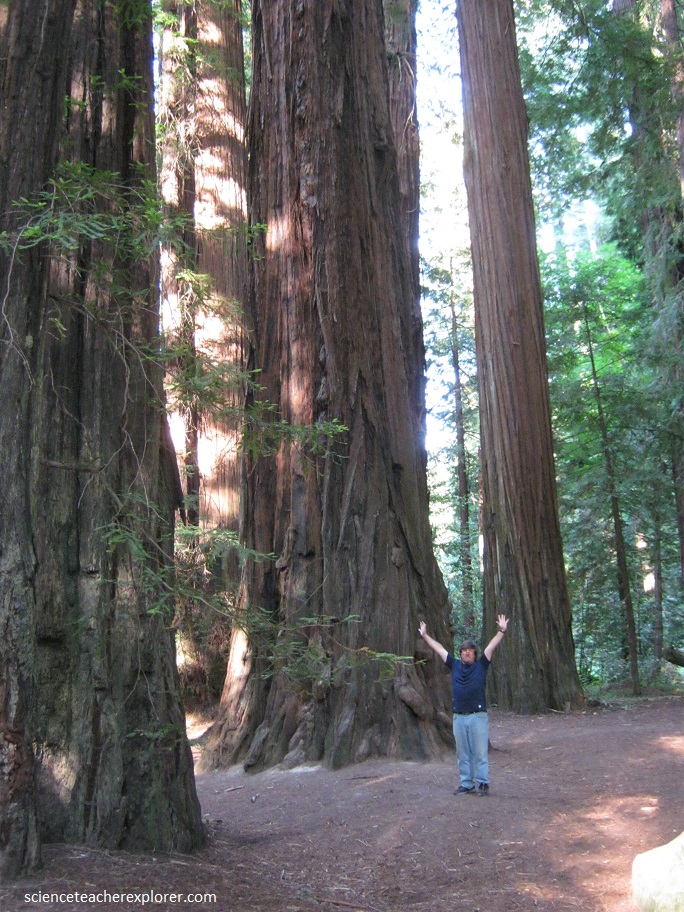Redwood NP, CA USA
On August of 2013; Becky (my wife) and I took a week-long vacation in Northern California, near Point Arena. While there, we took a day to explore the Redwood National and State Park.

Redwood National and State Park comprises a region of coastal mountains bordering the Pacific Ocean, equidistant (560 kilometers) from San Francisco, California and Portland, Oregon. It is covered with a magnificent forest of Coast redwoods (Sequoia sempervirens), the tallest living things and among the most impressive trees in the world. Several of the world’s tallest known trees grow within the property.

California’s coast redwoods follow the fog and thrive at elevations below 2,000 feet, where heavy winter rains and moderate year-round temperatures occur. Trees can grow to 110 m or more, with a base diameter of about 7 m. Their root systems are broad and shallow, from only a few inches to 6 feet underground. They resist insects, fire, and rot. Their vigor in sprouting back when cut or badly burned is an important factor in their longevity. The oldest known tree has been around for more than 2,500 years.

Feathery ferns, redwood sorrel, salal, trillium, Douglas iris, and tiger lily grow in splendor beneath redwoods. Salmonberry, thimbleberry, and huckleberry provide wildlife forage, and acres of rhododendrons and azaleas bloom from April to June. The area’s warm climate encourages many other tree species—including western hemlock, Douglas-fir, big-leaf maple, red alder, California laurel, tanoak, madrone and Port Orford cedar—to share the redwood habitat.

In contrast to their size, redwoods have extremely small cones — about one inch long. They have appropriately large root systems, however, often extending 30 meters and intertwining with the roots of other redwoods, according to the California Department of Parks and Recreation. Baby redwoods often sprout at their parents’ base, latching onto their roots for nutrients. For this reason, they often grow in circular clusters sometimes called fairy rings.

The coast redwood’s lumber has been highly valued historically. It is durable, resistant to rot and termites, non-warping, and relatively soft. For this reason, it has been extensively logged. Since logging began in the 1850s, 95 percent of old-growth coast redwoods have been cut down. Today, many redwoods exist in protected forests and parks.

The changing climate presents problems for redwoods. A warmer climate may result in less rain, and perhaps more concerning, less fog, which has historically been the tree’s defense against dry spells, according to an ongoing study by a group of University of California-based researchers. Fog in northern California and Oregon is on the decline because of climate change and the expanding human population along the coasts, which produce “urban heat islands”.

On January 8, 2017, a massive storm brought down this Chandelier Tree, a popular tunnel tree that the California Department of Parks and Recreation estimated at 33 m tall.

Ancient redwood forests store at least three times more carbon above ground than any other forests on Earth. Studies suggest that redwoods may also play an important part in mitigating climate change.